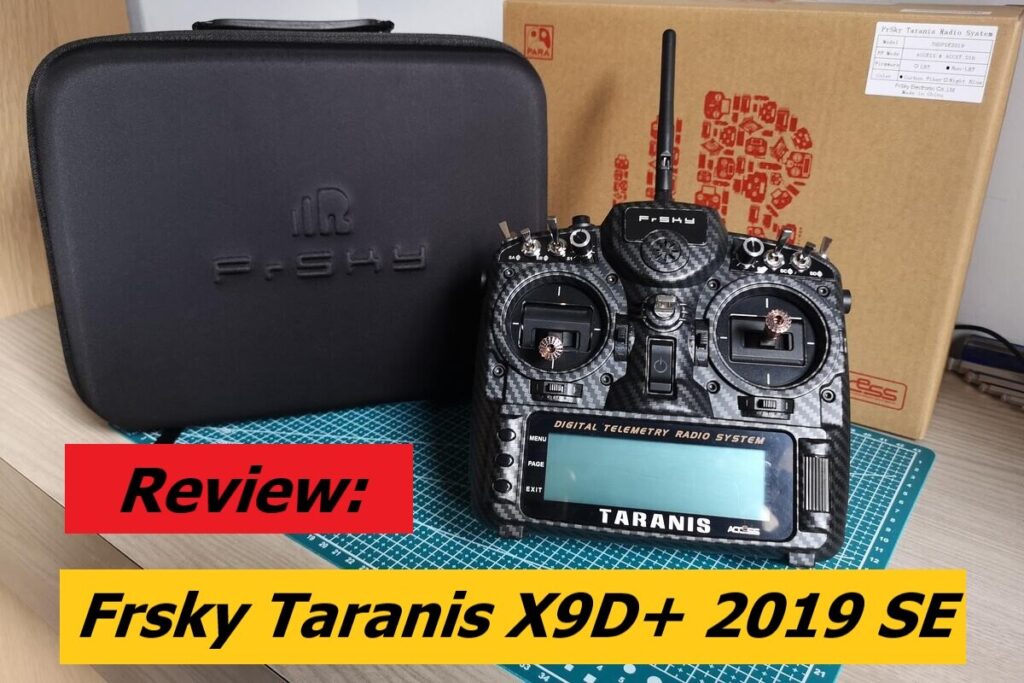This article will be reviewing the Frsky Taranis X9D+ 2019 as well as my personal thoughts on this radio. The Taranis X9D+ 2019 is my first OpenTX radio as I am upgrading from my trusty Futaba T8J & T10J. There are two versions of the Taranis X9D+ 2019; SE (Special Edition) and the Non-SE. I bought the SE version and I will be covering the differences between the versions in this article.
Having already set up and used my Taranis X9D+ 2019 for a couple of weeks. The experience is like a quantum leap in terms of the radio’s capabilities & flexibility, especially for someone like me who is using OpenTX for the first time.
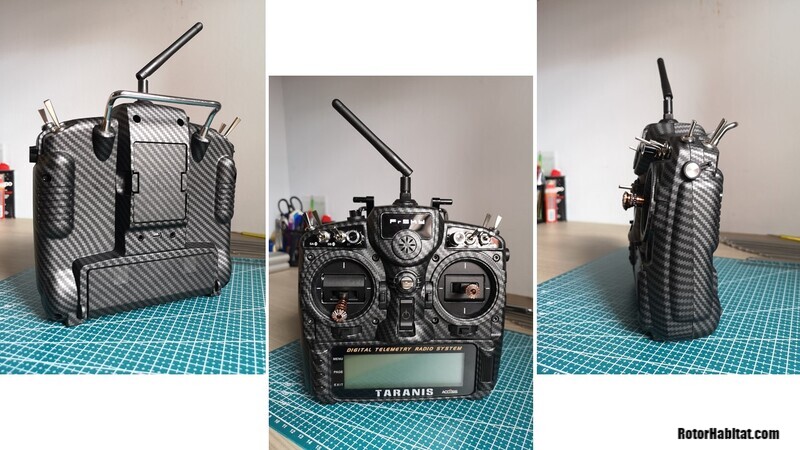
The original Frsky Taranis X9D+ was released in 2013 and it was the workhorse radio for the majority in the hobby. It was also well adopted in the open-source community of firmware developers. It became the de-facto standard for radio transmitters. This continued for many years until strong competition entered the market, together with some business decisions undertaken by Frsky. This cost them some market share and popularity.
With many radios such as the Jumper T16, T18 or Radiomaster TX16 available, which are hugely popular right now (at the point of writing). Why did I choose to get the Frsky Taranis X9D+ 2019? Since I have taken a break from this hobby for some time and decided I should start from the origin of the open-source radio development journey. Thus, having the Frsky Taranis X9D+ 2019 might be the better choice for me.
What is in the Box?
The Frsky Taranis X9D+ SE comes with a beautiful EVA semi-hard zipper case. This is a really good plus point as you don’t have to shop around for another decent case to safely store your radio when traveling around.
Inside the package, you will get the following:
- Simple Instructions Sheet
- Neck Strap
- Gimbal Protectors
- USB-A to Mini USB Cable
- Stickers
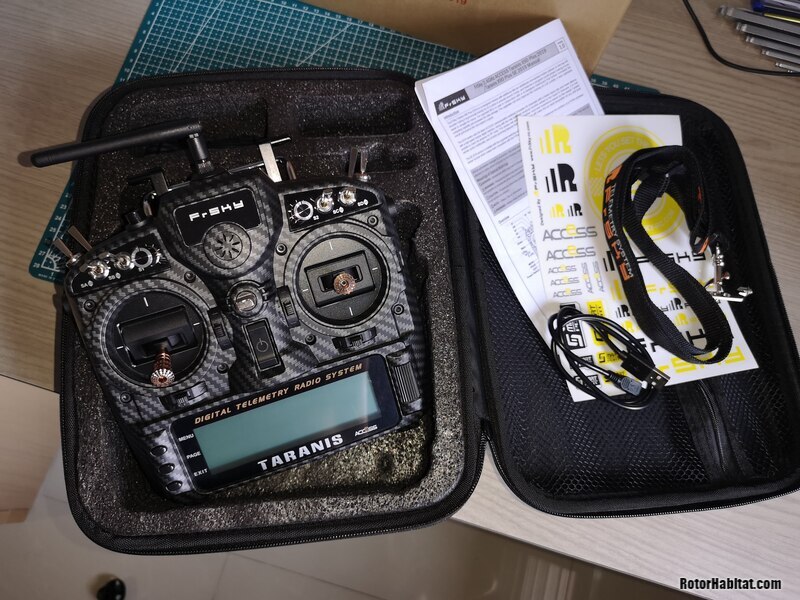
Do note that battery and SD card is not included, therefore you have to purchase them separately before you can use the radio. The Taranis X9D+ 2019 is shipped with OpenTX 2.3.0 loaded, it is recommended that you update OpenTX to the latest version for best performance.
Improvements & Changes for the Taranis X9D+ 2019
The new Taranis X9D+ 2019 retains the same form-factor from its predecessor, retaining the existing configuration of 2, 3 Positions switches, pots, sliders & trims. These are the improvements or changes for the Taranis X9D+ 2019:
- Improved circuit boards design, which increases the computing capability to run LUA scripts and optimizes overall performance
- Only ACCESS & ACCST D16, no longer supporting ACCST D8 or LR12
- A scroll wheel replaced the 3 menu buttons
- Additional momentary button switch
- Momentary power button replace a sliding power switch
- Supports only 2S batteries, the predecessor can use up to 3S
- Direct balanced charging via the mini USB port
The reason I mentioned improvements or changes as some changes are not exactly well received for some people. One example is the adding of ACCESS protocol but removing support for ACCST D8. This means flyers with D series or whoops using SPI D8 compatible receivers won’t be able to bind with the 2019 Taranis X9D+ unless you use an external XJT or Multi-Protocol module at the back of the Taranis.
Most drone pilots would find the new momentary button switch not useful and redundant. Frsky marketed this feature for DLG (Discus Launch Glider) pilots to activate launch mode. However, I can find one useful purpose for this feature; which is to use it as a bind button for toy whoops such as the Eachine H8 Mini. These models need to be re-bound every time on power up and I will set the button to the bind-on-channel function.
The move to change the power slide switch to a button comes with mixed responses from the community. It’s intention is to prevent accidental power off to the radio during operations. You will need to hold the power button for 5 sec to turn on and off the radio.
I personally find it kind of annoying due to the extra time needed when powering/off the radio. In fact, I did not have a single accidental power-off with my Futaba T10J (sliding power switch) over the years. In addition, it now is able to give an additional warning if you attempt to power off the radio while a telemetry enabled receiver is connected (You are able to disable this function).
Powering the TX and Battery Charging
The new Taranis X9D+ 2019 won’t be shipping with a battery, for the majority of the case. I guess this might be due to stricter air-freight regulations for lithium batteries. The radio’s battery connection is using a 3-pin JST-XH plug and the operating voltage range is between 6.5V to 8.4V. Although technically batteries with this voltage range and with a JST-XH connector can power the radio. It is stated that we should only use 2S lipo or li-ion batteries. This is due to the built-in charging function that will only balance charge 2S lipo/li-ion batteries.
Frsky has removed the barrel connector on the side of the radio for charging the battery from the 2019 Taranis. To charge the battery in the radio, simply plug in the supplied cable to the mini USB at the rear of the radio and use any USB charger capable of supplying 2A.
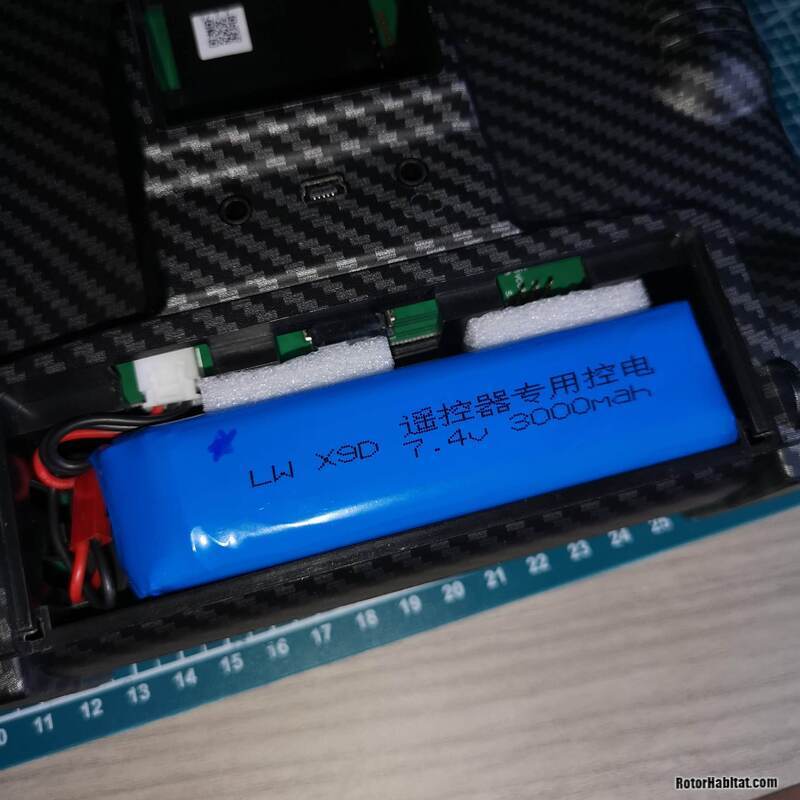
When shopping for your Taranis’s battery, ensure that the pack is within the dimension (80mm x 30mm x 24mm). The best option in my opinion is the blue “Generic” 3000mAh 2S lipo pack you can easily buy from Aliexpress or other sites. This pack is specifically designed for use on the Taranis, both 2019 and the original. It comes with a JST main discharge plug and the JST-XH balance leads.
Detail Look of the Tx (Inside & Out)
The 2019 Taranis retains its non-colour screen with the same resolution (212 X 64 pixels). It seems that Frsky is reserving the colour screen for their high-end radios such as the Horus Series. However, it is important to note that the Jumper & Radiomaster radios are already incorporating colour screens as standard. They are also offering them at a lower price point.
So is it going to be a deal breaker for 2019 Taranis to not have a colour screen? In my opinion I guess not, the core functionality is the same for both the colour & non-colours screen radios. Honestly, it will only affect the user interface when you navigate the menus or when you’re displaying telemetry data on the radio screen.
Having said this, FPV pilots who are using their goggles most of the time won’t be too bothered by the radio screen type. However, I would say drone pilots flying autonomous aircraft such as Ardupilot will appreciate a colour screen. This will allow more and better quality telemetry information such as map data to be displayed on the colour screen.
The addition of the menu navigation scroll wheel allows quick selection of menu items and is especially helpful when entering text. Imagine doing the same using the up & down select buttons on the original Taranis. However, having to push down the scroll wheel to ‘enter’, there is a tendency to ‘scroll’ a line thus selecting the wrong menu item accidentally.
The SE version of the 2019 Taranis is using a detachable RP-SMA Antenna, therefore it is easily replaceable or if you wish to upgrade to an after-market antenna to improve range.
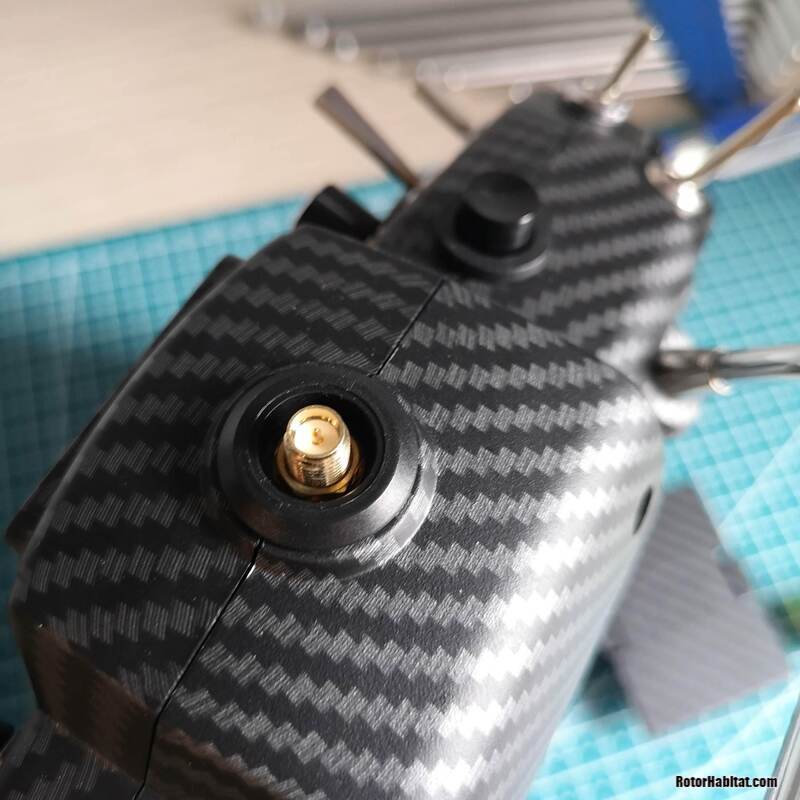
At the back of the radio comes a standard JR type external module bay. You can install modules such as the Frsky XJT, R9M or the TBS Crossfire (Yes, it is supported).
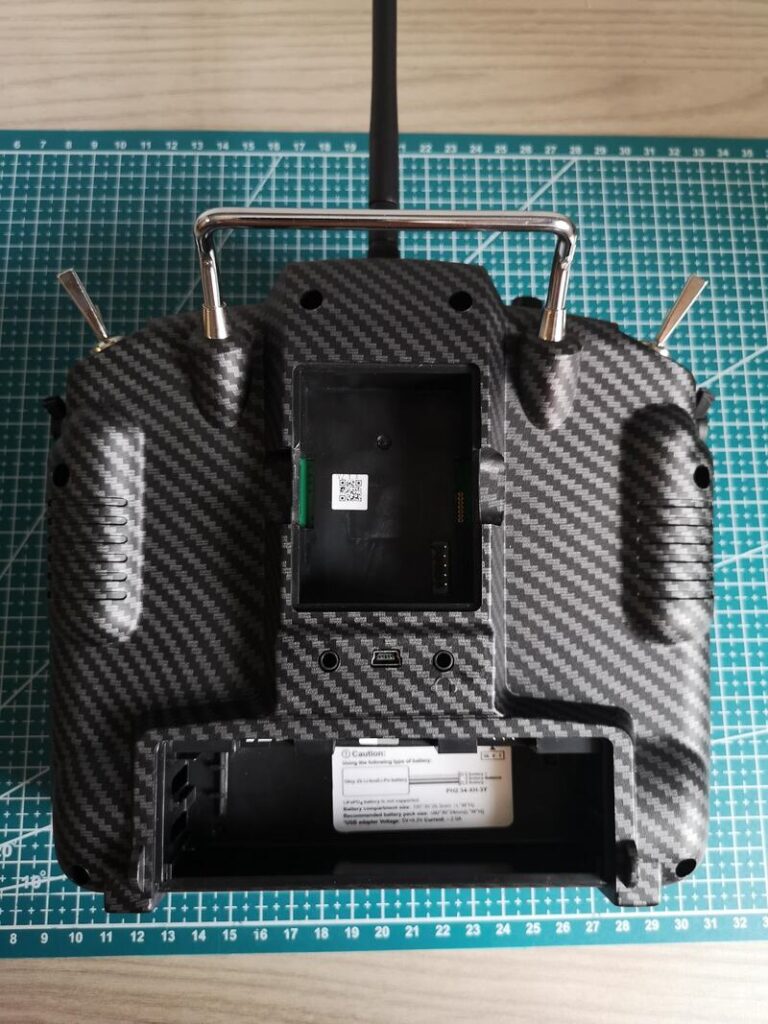
You will find the trainer port, mini USB port and the audio jack right below the module bay area.
Inside the battery compartment, you will find the JST-XH power socket, SD card and S-Port. Similar to the Frsky QX7 radios, you have a dedicated S-Port for device firmware updates such as your receivers. You do not need to use the module bay pins and the modified servo cables.
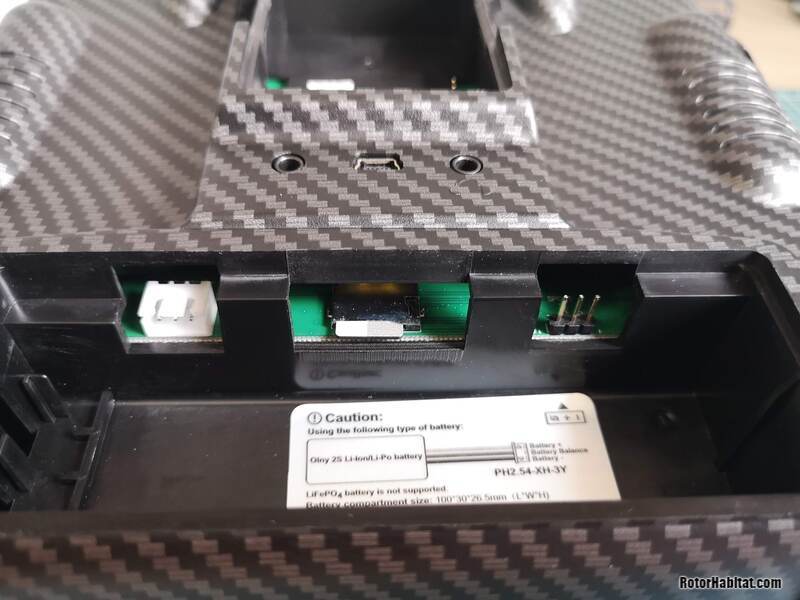
External Module Support
To enable Crossfire support and other protocols, you have to update your OpenTX firmware to the latest version. At the point of writing, I am using OpenTX 2.3.14 and I have the follow external protocol available:
- PPM
- XJT
- DSM2
- CRSF
- MULTI
- R9M
- R9M ACCESS
- GHST
- SBUS
Teardown of the Taranis X9D+ 2019
The internal circuit boards are completely redesigned from the original Taranis X9D+. The most obvious difference is just one ribbon cable instead of two connecting the main board to the back RF module board
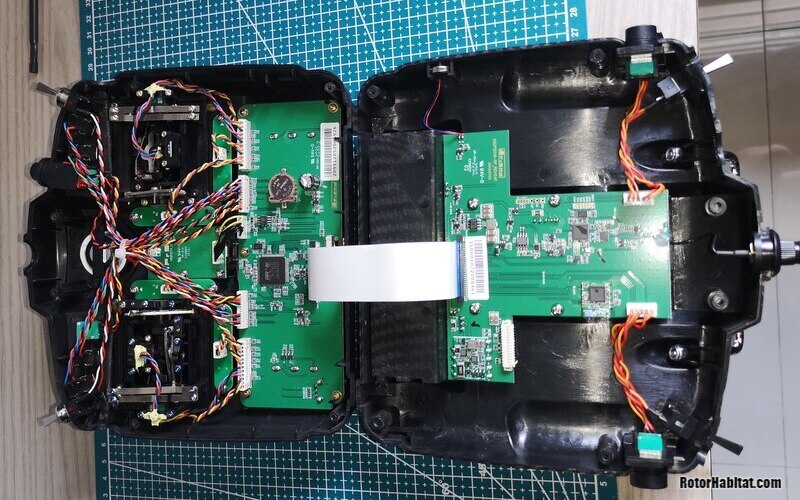
The main chip is upgraded from a STM32 F205 to STM32 F407, allow the 2019 Taranis better computing capability to run LUA scripts and optimizes overall performance.
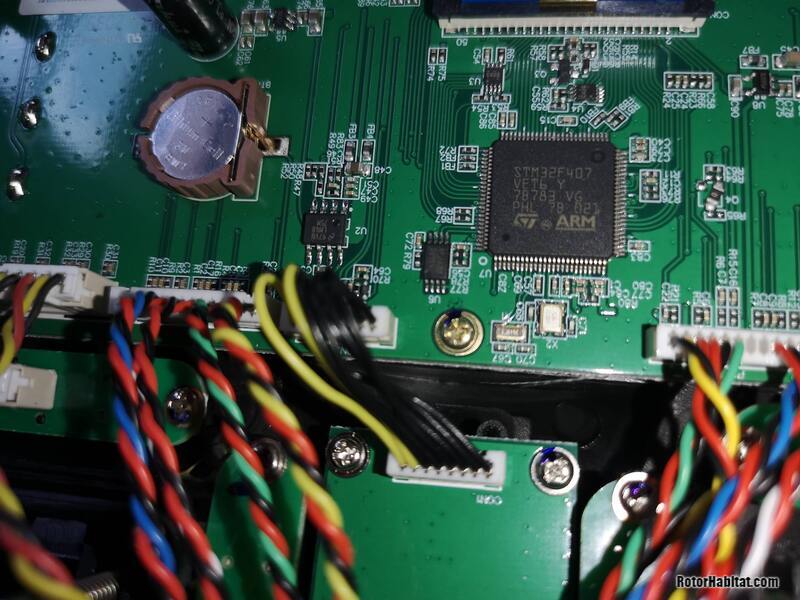
I would say the design and cable management of the 2019 Taranis X9D+ is well thought out. It is very convenient to split open the transmitter to do your gimbal adjustment or modifications. Without having the fear to snare a cable when opening the case and or having components falling out of place.
Specification Summary of the Taranis X9D 2019:
| Internal RF Module: | ISRM-S-X9 module (ACCST D16 and ACCESS) |
| Gimbal: | G9D Potentiometer / M9 Hall Sensor (SE Version) |
| Screen: | Backlit LCD resolution: 212*64 |
| USB & Ports: | Mini USB (Charging Supported), S-Port, Audio Port, Trainer Port & Micro SD card Slot |
| Battery: | 2S Li-Ion/Li-Po battery |
| Operating Voltage: | DC 6.5V to 8.4V |
| Operating current: | 130mA@8.2V (Typical) |
| Weight: | 670g (without battery) |
| Firmware: | OpenTX (Officially Supported) |
Differences Between SE and Non-SE Versions
The differences for the SE compared with theNon-SE versions of the Taranis X9D+ 2019 are:
- M9 Hall Sensor Gimbals
- Removable Antenna
- Upgraded Switches
- PARA Wireless Trainer Function (Bluetooth)
- EVA Carrying Case
The price difference between SE and Non-SE is about USD85. If this additional cost isn’t a show stopper for you, it will recommend getting the SE version of the Taranis X9D+ 2019.
The key advantage for the SE is having the M9 Hall Sensor Gimbals as compared to the G9D Potentiometer Gimbals on the Non-SE. Hall Sensor Gimbal have “non-contact” operations, therefore subjected to lesser wear & tear. Thus, having a longer useful life before needing a replacement.
Conclusion
Frsky has been making radios for quite some time, there is no doubt the Taranis X9D+ 2019 is a well-designed and high quality radio. The ergonomics are excellent as well, it just feels good in the hands (especially for ‘thumbers’). The new 2019 brings several updates and improvements to the original Taranis X9D, such as the new ACCESS protocol and better performance. However, we need to remember the 2019 Taranis breaks compatibility with some of their own older products such as the ACCST D8.
So coming to the most important question: Is the Frsky Taranis X9D+ 2019 worth the buy?
In my opinion, if you are an existing user of the original Taranis which might be wearing out, wishing to stick with the similarities and using mostly Frsky receivers. Then maybe the new 2019 Taranis X9D+ will be a good choice, as Frsky has a complete Ecosystem to support all user types in the hobby. 2.4GHz or 915MHz systems, FPV or fixed wings, etc.
However, if you are new to the hobby, you might want to keep your options open. Then I might suggest radios with the Multi Module built-it, this allows you to bind and fly all protocols currently in the market. This eliminates the need to invest in additional external modules.
In conclusion, the Frsky Taranis will be here to stay as they have been for many years. However, they do need to keep up with their competitors and continue to build relations with their customers as they always did in their forming year. With this done, I am sure we can expect even better products in the future!

